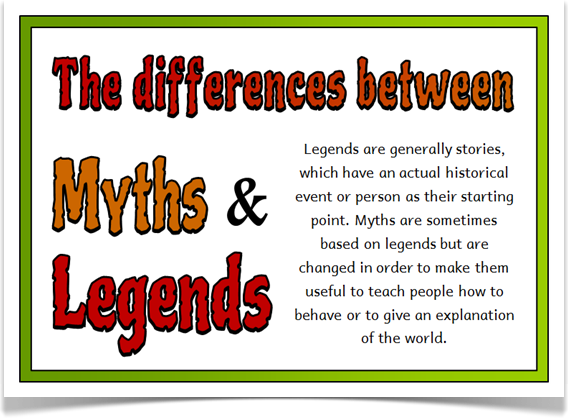The difference between myths and legends
we often hear the words
myths and legends used interchangeably, but there is a difference. A legend
contains some facts and becomes exaggerated to the point that real people or
events take on a "larger than life" quality. In contrast, a myth
isn’t based on fact, but is symbolic storytelling that was never based on fact.
For instance, the Norse didn’t know the science of thunder and lightning, so
they invented the myth of Thor in the sky pounding with his big hammer.
We’ll
concentrate on legends because our examples will all have some facts swirling
within them.
Consider
Teddy Roosevelt, the man who has earned an honorable spot in the upper level of
U.S. presidents for promoting such things as the establishment of national
parks, dissolving monopolistic corporations, regulating railroad rates, passing
the Pure Food and Drug Act, building the Panama Canal and more. We also know TR
was quite self-absorbed to the point that the nonpartisan PEW Research Center
has listed him as No. 2 on a list of presidents possessing grandiose
narcissism, or excessive vanity and conceit. For the curious, Lyndon Johnson
earned top honors. The current president has not yet been rated.
Roosevelt
wanted to control his personal image. His command of the Rough Riders in their
charge up San Juan Hill in Cuba flirts with legendary status. To ensure his
actions were reported favorably he took along a journalist friend, Richard
Harding Davis, whom he could depend on for positive coverage. Plus, the adage
of a picture being worth a thousand words prompted TR to take artist Frederic
Remington along and paint glorious pictures. With a positive reputation
secured, TR went on to the New York governorship, vice presidency under
McKinley and then the presidency. When World War I came along, he was out of
office and wanted President Woodrow Wilson to send him into battle again, but
Wilson refused, thinking he would just parlay that into another legendary
“Charge up San Juan Hill.â€
Because legends are the theme, let’s look at a few more. When meeting cars with
Wyoming license plates not many people think of the legend pictured on them.
The iconic bucking horse on the plate depicts the famous Steamboat that
thrilled crowds and riders from 1901 to 1914. He received his curious name as a
3-year-oldy when he fought against being gelded, slammed his head on the
ground, and injured the cartilage in his nose. People around him said afterward
his breathing sounded like a weird, wheezing whistle, like a steamboat. It
didn’t affect his performance because he went on to make some real money in the
arena for that era, an estimated $500,000.
A Gordon
Lightfoot song I’ve heard dozens of times speaks of a shipwreck on the Great
Lakes, Lake Superior to be exact. He wrote the song, “The Wreck of the Edmund
Fitzgerald,†in 1976, a year after the ship went down in a storm. It’s a
story-song about a common bulk carrier with a load of taconite that has
elevated its sinking into legendary status to equal that of the Titanic, which
sank over 50 years before. His opening line resonates with a poetic sound, “The
legend lives on from the Chippewa on down,†to add to the song’s strength.
Without the legend, it is doubtful we would remember the historic occurrence.
Many of us would gladly take a nickel for each time a legendary character named Sitting Bull appears in history and fiction. His name rolls easily off the tongue in association with Crazy Horse, Custer and the Little Big Horn. History shows him a warchief at the Battle of Killdeer Mountain in 1863 and at the Indian attack on Fort Rice in 1865. Sometimes he is referred to as a warrior, other times as a medicine man, but another side of him can be brought to light, too. William V. Wade’s memoir told of the time in Fort Yates when he introduced some relatives to Sitting Bull in 1883, who it was said liked little children. When he spotted the 4-year old boy with them he made sure to shake hands with him, after which the boy hid behind his father’s legs, something that Sitting Bull found very amusing, but unfortunately, never became part of the legend.
Sumber : https://bismarcktribune.com/
